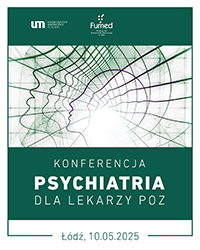Pseudo-chilblain lesions in children during the COVID-19 pandemic
Aleksandra Kowalska1, Ewa Muzalewska2, Katarzyna Kobusińska2, Marta Lewicka3, Andrzej Kurylak2,3
 Affiliation and address for correspondence
Affiliation and address for correspondenceIntroduction and objective: During the COVID-19 pandemic, a range of uncommon cutaneous symptoms were observed, which were linked to the SARS-CoV-2 infection. These dermatological symptoms in the form of reddish or purple-coloured lesions on the fingers and toes, accompanied by blisters and ulcerations, were termed as “COVID fingers/toes” – a pseudo-chilblain cutaneous manifestation of COVID-19. The aetiopathogenesis of pseudo-chilblain lesions has not been conclusively determined. At first, SARS-CoV-2 infection was regarded as an evident cause of chilblains. Various studies conducted over a two-year period have not managed to plausibly confirm its direct implications. Materials and methods: The study was of a retrospective nature. The analysis involved clinical symptoms, results of selected laboratory tests, as well as capillaroscopy of the microcirculation in 15 children diagnosed with skin lesions of chilblain-like morphology. Results: All patients from the study population presented with lesions in distal body parts which were of erythematous or oedematous morphology, and resembled chilblains. None of the hospitalised patients suffered from fever or presented with other systemic symptoms. The reverse transcription polymerase chain reaction test for SARS-CoV-2 was negative in all the patients. SARS-CoV-2 antibodies were found in 5 out of 9 patients tested for their presence. Microcirculation abnormalities were diagnosed in 80% of the patients. In none of the children did capillaroscopy image correspond with microangiopathy characteristic of inflammatory connective tissue diseases. Frequent abnormalities found in more than two fingers/toes were: pericapillary oedema (57%), dilated capillaries (42.8%), venous stasis (35.7%), presence of branched and tortuous capillaries (28.5%). Conclusions: Pseudo-chilblain lesions observed during the SARS-CoV-2 pandemic are probably secondary to multifactorial epiphenomenon.











